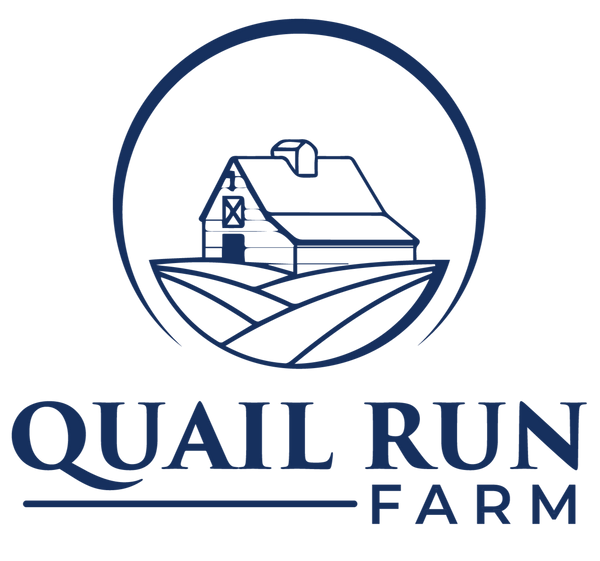About Our Honey
Learn more about the 30+hives that keep our bees buzzing around the farm, pollinating wildflowers and bringing its pollen back to make the deliciously aromatic wildflower honey that you know and love today!

Farm Fresh Honey
We’ve recently added an apiary to Quail Run Farm’s acreage! With 30 hives buzzing about (for those counting, that's about 600,000 honeybees), there will be lots to learn, appreciate, and savor about having these pollinators on the farm. These bees turn nectar and pollen from the farm's wildflowers and trees into sweet and sticky honey–a normal day’s work for the bees, a miracle to us!
The wildflower pollen gives this honey a deep amber hue, as well as a whole host of health benefits. By leaving the honey raw and unfiltered, we make sure that it's naturally-occurring antioxidants and anti-inflammatory agents remain in the bottle.
You can shop our 100% Pure, Raw, and Natural Wildflower Honey at our on-farm market or by clicking below.
If you have any questions or want to learn more, please email us at quailrunfarmhoney@gmail.com!
Making and Managing a Hive Yard
Earlier this spring, our friends at Wauhatchie Forest School came out to help us handpaint all of our brood boxes. Check out the before and after of the neighborhood of hives our bees call home!
A special thanks also goes out to Mark Chesnutt our Master Beekeeper, apiarist, and bee-extraordinaire, who is helping manage our apiary!


From Hive to Bottle
The process:

Step 1:
Using a smoker to calm the bees, we carefully remove the frames from the hives and place in airtight bins for transport. Once removed and placed in our honey shed, we inspect the frames for how full their combs are with capped honey.

Step 2:
The thin white layer of beeswax on the comb is called capping, designed to keep the honey in place until the bees need access to it. We use a process called uncapping to remove this layer by putting it between two tension rods fitted with circular plates that puncture the capping.

Step 3:
Once the honey has been exposed, we place the frames into a device called a spinner. This devices acts like a centrifuge, spinning the frames at a high speed and pulling the honey free from the comb. It then goes through an opening at the bottom into a bucket that we label, date, and put into cool storage!

Step 4:
After we have extracted all the frames and have full buckets of delicious honey- we bottle it, label it, and bring it to the markets you all know and love! We offer four sizes: a 3oz gift jar, a 12oz honey bear, and two sizes of family size squeeze bottles in 16oz and 24oz. Get yours below or come see us on the farm or around town!
